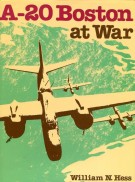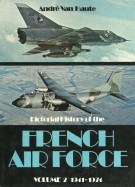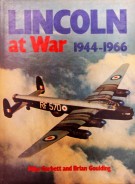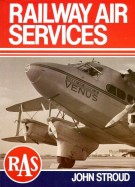A-20 Boston at War
| Autore/i | William N. Hess | ||
| Editore | Ian Allan Publishing | Luogo | London |
| Anno | 1979 | Pagine | 130 |
| Dimensioni | 23x30 (cm) | Illustrazioni | ill. b/n n.t. - b/w ills. |
| Legatura | cart. edit. con sovracc. ill. colori - Hardcover with dustjacket | Conservazione | Usato ottime condizioni - used very good |
| Lingua | Inglese - English text | Peso | 1500 (gr) |
| ISBN | 0711009651 | EAN-13 | 9780711009653 |
momentaneamente non disponibile
First edition 1979.
Although it never achieved the spectacular success of either the Mosquito or the Ju88, the basic design of the Douglas A-20 produced a fast, extremely rugged, versatile and dependable series of aircraft whose service in the later A-26 variant extended well beyond World War II.
The original design was a Douglas-inspired private venture DB-7 whose performance and potential in 1939 attracted first the French and later the British. The British named all the light bomber versions of the A-20 Bostons and the night-fighter and night-intruder versions, 'Havocs'. Later in the war the name 'Havoc was taken over by the Americans who used it to describe the light-bomber in service with the USAAF. The excellent operational performance of all variants of the A-20 led late in World War lI to the development of the A-26 Invader which exceeded all its load carrying and performance requirements and would have been produced in vast numbers had the war not ended. As it was, the A-26 (re-designated B-26 in 1948) remained in front line service with the USAF until the late 1960 by which time it had added Korea and Vietnam to its battle honours.
In this book American aviation specialist William Hess, himself a veteran airman of World War II, tells the story of this remarkable series of aircraft in the words of the crews who flew them in action and in a new selection of photographs many of which have not been published before.
Note alle condizioni del volume
Usato ottime condizioni, lievi segni di uso e del tempo. (T-CA)
Potrebbero interessarti anche...





